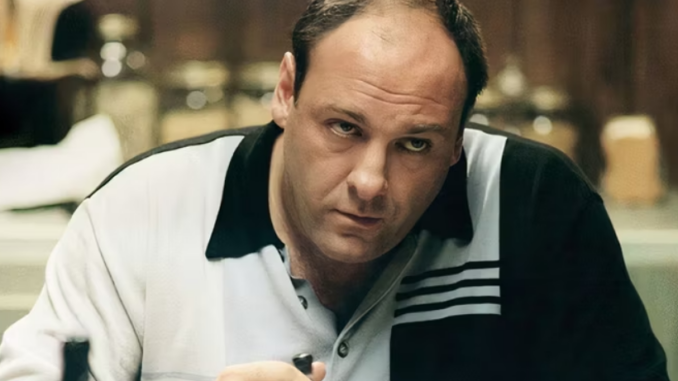
Introduction
“The Sopranos,” a landmark television series created by David Chase, left an indelible mark on the landscape of American television. With its intricate storytelling, complex characters, and groundbreaking approach to the gangster genre, the show redefined what it meant to be a TV drama. However, the series finale, titled “Made in America,” aired on June 10, 2007, and has since sparked heated debates among fans and critics alike. Recently, one of the show’s stars has spoken out against the ending, calling it “bad and wrong.” In this essay, we will explore the implications of this critique, analyze the finale’s impact on viewers, and reflect on the legacy of “The Sopranos.”
The Controversy Surrounding the Finale
The final moments of “The Sopranos” are as iconic as they are polarizing. The screen cuts to black abruptly as Tony Soprano, portrayed by James Gandolfini, sits in a diner with his family, creating a suspenseful atmosphere that leaves viewers in a state of confusion. Some saw it as a brilliant artistic choice that encapsulated the uncertainty of Tony’s life, while others viewed it as an unsatisfying and frustrating conclusion to the series.
The criticism from the show’s star, who recently described the ending as “bad and wrong,” reflects a sentiment held by many fans who felt that the finale did not do justice to the show’s rich narrative and character development. This perspective raises questions about the expectations viewers have for closure in storytelling and the challenges of delivering a satisfying ending to a complex series like “The Sopranos.”
Viewer Expectations and Narrative Closure
Viewers often invest emotionally in characters and their journeys, forming attachments that can lead to specific expectations regarding how stories should conclude. “The Sopranos” was no exception; fans followed Tony Soprano’s tumultuous life for six seasons, witnessing his struggles with family, loyalty, and the criminal underworld. As the series progressed, viewers became increasingly invested in the fate of Tony and the supporting characters, longing for a resolution that provided clarity and closure.
However, the abrupt ending of the series leaves many questions unanswered. Did Tony survive the encounter in the diner? What happened to his family? The lack of resolution can be seen as a betrayal of the audience’s investment in the story. The show’s star’s critique highlights this tension between artistic intent and audience expectation. While some may argue that the ambiguity reflects the unpredictable nature of life, others believe it undermines the emotional payoff of the narrative.
Artistic Intent vs. Audience Satisfaction
David Chase, the creator of “The Sopranos,” has often defended the series finale, stating that it was intended to evoke a sense of ambiguity and provoke thought rather than provide clear answers. Chase has expressed that the ending is meant to reflect Tony’s constant state of fear and uncertainty, a fitting conclusion for a character who has lived his life in the shadow of danger.
However, the critique from the show’s star suggests a different viewpoint. The distinction between artistic intent and audience satisfaction is a recurring theme in discussions about the finale. While Chase’s vision may have been to challenge viewers and encourage them to interpret the ending, it ultimately led to disappointment for many fans who sought closure. This tension is not unique to “The Sopranos,” as many shows face similar challenges when attempting to balance artistic integrity with audience expectations.
The Legacy of “The Sopranos”
Despite the controversy surrounding its ending, “The Sopranos” remains a cornerstone of television history. It revolutionized the medium, paving the way for a new era of prestige television. The series is often credited with ushering in the “Golden Age of Television,” inspiring countless shows that followed in its footsteps.
The legacy of “The Sopranos” extends beyond its storytelling; it also transformed how audiences engage with television. The show’s exploration of complex themes such as identity, morality, and family dynamics continues to resonate with viewers, even years after its conclusion. The series sparked discussions about mental health, the American dream, and the nature of evil, solidifying its place as a cultural touchstone.
The Impact of Criticism on the Series
The recent criticism from one of the stars of “The Sopranos” serves as a reminder that even beloved shows are not immune to scrutiny. The legacy of “The Sopranos” is intertwined with the diverse perspectives of its audience. While some fans embraced the ambiguity of the ending, others felt let down by its lack of resolution. This diversity of opinion enriches the conversation around the series, demonstrating the complexity of storytelling in modern television.
Criticism, whether positive or negative, plays a crucial role in shaping the perception of a series over time. The ongoing debates surrounding the ending of “The Sopranos” highlight the show’s impact on popular culture and its enduring relevance. As new generations of viewers discover the series, the conversations around its finale continue to evolve, ensuring that “The Sopranos” remains a subject of discussion and analysis.
Conclusion
In conclusion, the criticism of “The Sopranos” finale as “bad and wrong” encapsulates the divide between artistic intent and audience expectations. While the series has left an undeniable legacy in the television landscape, the debate surrounding its ending underscores the challenges of providing closure in complex narratives. “The Sopranos” will always be remembered for its groundbreaking storytelling, rich character development, and thought-provoking themes, even as it continues to spark controversy and debate. The show’s enduring impact on popular culture and its ability to provoke discussion ensures that “The Sopranos” will remain a topic of conversation for years to come.
